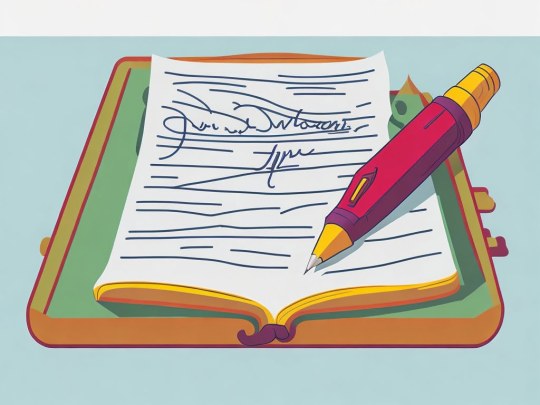#WritingEfficiency
Explore tagged Tumblr posts
Link
Are you overwhelmed by endless writing tasks? Say hello to FlyMSG, a productivity tool that’s changing the game for professionals everywhere. With its powerful AI capabilities, FlyMSG allows you to create messages, posts, and comments in seconds, saving you up to 30 hours a month. Imagine effortlessly generating high-quality content right from your browser. Whether you’re networking on LinkedIn or responding to clients, FlyMSG streamlines your process and enhances your communication. Its extensive library of templates and intuitive text-expanding features make it a must-have for anyone looking to improve their efficiency. Right now, you can grab the FlyMSG lifetime deal for just $69—an incredible opportunity to level up your workflow at a fraction of the retail price. Plus, with a 60-day money-back guarantee, there's no need to hesitate. Ready to transform the way you work? Check out our full review and find out how FlyMSG can empower you to achieve more with less effort: https://jomiruddin.com/flymsg-lifetime-deal-review-i-an-ai-writer-text-expander-ai-post-generator-linkedin-commenting-super-productivity-app/ #FlyMSG #Productivity #WritingTools #AIWriter #Efficiency #WorkSmarter #TransformYourWorkflow #ProfessionalDevelopment
#businessproductivity#timemanagement#AIwritingtool#productivityapp#LinkedIncomments#writingefficiency#textexpander#FlyMSGreview#automationtools#AppSumodeal#writing efficiency
0 notes
Text
How Fixkey AI Enhances Writing Efficiency for Professionals and Students

In today’s fast-paced world, effective communication is essential for success. Fixkey AI offers a solution that empowers professionals and students alike to refine their writing skills and improve efficiency.
Problem Statement:
Many individuals struggle with writing, whether it’s for reports, essays, or correspondence, leading to time-consuming revisions and missed deadlines.
Application:
Fixkey AI enables users to enhance their writing in real time. For example, a marketing professional drafting a proposal can highlight sections of their text to receive immediate feedback on tone, clarity, and grammar, streamlining the editing process.
Outcome:
Users of Fixkey AI report increased confidence in their writing abilities, faster completion of projects, and a marked improvement in the quality of their written communication.
Industry Examples:
Business: Executives use Fixkey AI to create polished reports and presentations, ensuring clarity and professionalism.
Academia: Students leverage Fixkey AI to refine essays and research papers, improving their grades and comprehension.
Content Creation: Bloggers and content creators utilize Fixkey AI to enhance articles, ensuring engagement and readability.
Enhance your writing process with Fixkey AI’s powerful tools. Visit aiwikiweb.com/product/fixkeyai
0 notes
Text
How to Write a Good Novel Timeline

How to Write a Good Novel Timeline
Table of Contents
- Introduction - Understanding the Importance of a Novel Timeline - 2.1 Defining the Purpose - 2.2 Impact on Plot Development - Steps to Create an Effective Novel Timeline - 3.1 Outlining Key Plot Events - 3.2 Developing Character Arcs - 3.3 Incorporating Subplots - 3.4 Establishing Time Intervals - 3.5 Balancing Pacing - Tools and Techniques for Novel Timeline Creation - 4.1 Traditional Outlining - 4.2 Digital Timeline Software - 4.3 Visual Storyboarding - 4.4 Collaborative Tools - Navigating Challenges in Novel Timeline Construction - 5.1 Avoiding Overcomplication - 5.2 Managing Chronological Consistency - 5.3 Adapting to Plot Changes - Benefits of a Well-Constructed Novel Timeline - 6.1 Enhancing Writing Efficiency - 6.2 Ensuring Plot Coherence - 6.3 Facilitating Revision Processes - Tips for Writing Engaging Timelines - 7.1 Adding Milestones and Turning Points - 7.2 Utilizing Flashbacks and Foreshadowing - 7.3 Keeping Reader Engagement in Mind - SEO Integration: Crafting Content for Novel Writing Enthusiasts - 8.1 Using Keywords Strategically - 8.2 Creating SEO-friendly Headlines - Conclusion - FAQs About Constructing Novel Timelines
Article
Introduction Embarking on the journey of writing a novel requires more than just a captivating plot and well-developed characters. One often overlooked but crucial element is a well-constructed novel timeline. In this guide, we'll explore the art of creating an effective timeline that not only organizes your story but enhances the overall writing process. Understanding the Importance of a Novel Timeline Defining the Purpose A novel timeline serves as the backbone of your narrative structure. It outlines the chronological sequence of events, providing a roadmap for both the writer and the reader. Impact on Plot Development A carefully crafted timeline directly influences how your plot unfolds. It ensures logical progression, preventing inconsistencies and plot holes while maintaining the reader's engagement. Steps to Create an Effective Novel Timeline Outlining Key Plot Events Begin by outlining the key events that drive your plot forward. Identify the major milestones, turning points, and moments of climax that shape your narrative. Developing Character Arcs Integrate character development into your timeline. Understand how each character evolves throughout the story, and align their arcs with the overarching plot. Incorporating Subplots Don't forget the power of subplots. Weave them seamlessly into your timeline, ensuring they enhance the main narrative without overshadowing it. Establishing Time Intervals Assign specific time intervals to events. Whether your story unfolds over days, months, or years, a clear timeline maintains coherence. Balancing Pacing Consider the pacing of your novel. Distribute events strategically to maintain a balance between moments of tension and periods of reflection. Tools and Techniques for Novel Timeline Creation Traditional Outlining Traditional outlining on paper or digital documents allows for a systematic approach. Create a linear representation of your timeline with key events and their corresponding chapters. Digital Timeline Software Explore digital timeline software designed for writers. These tools often provide visual representations, making it easier to grasp the chronological flow of your narrative. Visual Storyboarding Consider visual storyboarding techniques. Creating a visual representation of your timeline through sketches or diagrams can offer a unique perspective on the progression of your story. Collaborative Tools For collaborative writing projects, use online platforms that facilitate shared timeline creation. This ensures consistency and coordination among multiple authors. Navigating Challenges in Novel Timeline Construction Avoiding Overcomplication While detail is crucial, avoid overcomplicating your timeline. Focus on key events and relationships to maintain clarity. Managing Chronological Consistency Ensure chronological consistency throughout your timeline. Any deviations can disrupt the reader's immersion in the story. Adapting to Plot Changes Stay flexible. If your plot takes an unexpected turn, be ready to adapt your timeline accordingly, ensuring coherence with the altered narrative. Benefits of a Well-Constructed Novel Timeline Enhancing Writing Efficiency A clear timeline streamlines the writing process. Knowing what comes next eliminates writer's block and enhances overall efficiency. Ensuring Plot Coherence A well-constructed timeline minimizes plot holes and ensures coherence. Readers appreciate narratives that flow logically and seamlessly. Facilitating Revision Processes During revisions, a timeline becomes a valuable tool. It helps identify pacing issues, inconsistencies, and areas that may require additional development. Tips for Writing Engaging Timelines Adding Milestones and Turning Points Infuse your timeline with milestones and turning points. These moments serve as anchors, keeping readers invested in the progression of your story. Utilizing Flashbacks and Foreshadowing Experiment with non-linear storytelling. Incorporate flashbacks and foreshadowing to add depth and intrigue to your timeline. Keeping Reader Engagement in Mind Consider the reader's experience. Craft your timeline in a way that maintains suspense, encouraging readers to eagerly anticipate what happens next. SEO Integration: Crafting Content for Novel Writing Enthusiasts Using Keywords Strategically When sharing insights on novel timelines, strategically incorporate keywords related to novel writing, plotting, and storytelling techniques. Creating SEO-friendly Headlines Craft headlines that resonate with writers seeking guidance on constructing effective novel timelines. Use SEO-friendly language to enhance discoverability. Conclusion In the intricate dance of novel writing, a well-constructed timeline emerges as a guiding force. It not only organizes the narrative but elevates the writing process, ensuring a cohesive and engaging story that captivates readers from start to finish. FAQs About Constructing Novel Timelines Read the full article
#CharacterArcs#Howtowriteagoodnoveltimelinefree#Howtowriteagoodnoveltimelinereddit#Howtowriteagoodnoveltimelinetemplate#NovelWriting#Plotdevelopment#shortstorytimeline#storyplottimeline#TimelineConstruction#timelineforstorywriting#timelineofastoryexample#WritingEfficiency#writingtimelinetemplate
0 notes
Text
Top 20 Free AI Writing Tools in 2023
#AIWritingTools#FreeAI#ContentCreation#WritingEfficiency#AI2023#ai#writing#technology#poetry#artificialintelligence#writersofinstagram#tech#writer#machinelearning#photography#startup#love#music#art#poet#nyc#poem#siliconvalley#poetrycommunity#california#poetsofinstagram#bigdata#google#losangeles#dupdupfamily
1 note
·
View note
Text
How Compose AI Enhances Writing Efficiency for Professionals

Professionals often spend hours drafting and refining emails, reports, and other documents. Compose AI solves this problem by providing autocomplete suggestions, smart shortcuts, and sentence rewrites, helping you write faster and more effectively.
Problem Statement: Writing professional emails and documents can be time-consuming, especially when ensuring they are both concise and appropriately toned.
Application: Compose AI provides autocomplete suggestions for common phrases, ensuring faster response times. Additionally, its rewrite feature allows professionals to adapt their writing style depending on the recipient—switching from formal to casual as needed. The browser integration means Compose AI can be used for writing directly in email clients, Google Docs, and more.
Outcome: Professionals using Compose AI save time drafting emails, communicate more effectively, and maintain consistency in tone and style. This leads to better productivity and a more polished professional presence.
Industry Examples:
Sales Teams: Use Compose AI to draft personalized yet efficient responses to client inquiries, improving communication while saving time.
Writers and Editors: Writers can quickly create first drafts, while editors can use the rewriting tool to adjust tones and refine content.
Customer Service Representatives: Use smart shortcuts for common responses, ensuring faster reply times and better customer experiences.
Additional Scenarios: Compose AI can also be used for social media content creation, internal communications, and brainstorming ideas for content writing.
Make your writing more efficient with Compose AI.
Try it out at aiwikiweb.com/product/compose-ai/
#WritingEfficiency#ComposeAI#AI#Productivity#Automation#WritingTools#SalesTech#CustomerService#ProfessionalCommunication#SmartShortcuts
0 notes
Text
How do you write a timeline for a novel?

Outline of the Article
1. Introduction
- 1.1 Significance of a Novel Timeline - 1.2 Streamlining the Writing Process
2. Understanding the Purpose of a Novel Timeline
- 2.1 Defining Key Plot Events - 2.2 Guiding Character Development - 2.3 Ensuring Chronological Consistency
3. Steps to Create a Comprehensive Novel Timeline
- 3.1 Outlining Key Plot Events - 3.2 Developing Character Arcs - 3.3 Balancing Subplots - 3.4 Assigning Time Intervals - 3.5 Maintaining Pacing
4. Tools and Techniques for Constructing Novel Timelines
- 4.1 Traditional Outlining - 4.2 Digital Timeline Software - 4.3 Visual Storyboarding - 4.4 Collaborative Tools
5. Challenges and Solutions in Novel Timeline Construction
- 5.1 Avoiding Overcomplication - 5.2 Managing Chronological Consistency - 5.3 Adapting to Plot Changes
6. Benefits of a Well-Crafted Novel Timeline
- 6.1 Enhancing Writing Efficiency - 6.2 Ensuring Plot Coherence - 6.3 Facilitating Revision Processes
7. Tips for Crafting Engaging Timelines
- 7.1 Incorporating Milestones and Turning Points - 7.2 Utilizing Flashbacks and Foreshadowing - 7.3 Keeping Reader Engagement in Mind
8. SEO Integration: Crafting Content for Novel Writers
- 8.1 Strategic Keyword Usage - 8.2 SEO-friendly Headlines
9. Conclusion
- 9.1 Recap of the Importance of Novel Timelines - 9.2 Encouragement for Writers
10. FAQs About Writing Timelines for Novels
- 10.1 How detailed should a novel timeline be? - 10.2 Can I create a timeline after writing the novel? - 10.3 What tools can I use for digital timeline creation? - 10.4 How does a well-constructed timeline aid in revisions? - 10.5 Is it necessary to follow the timeline strictly during writing?
Article
Introduction Embarking on the journey of writing a novel is an exciting endeavor, but the path becomes clearer and more manageable with the creation of a well-crafted novel timeline. In this guide, we'll explore the art of constructing a timeline for your novel, offering insights, tips, and tools to streamline your writing process. Understanding the Purpose of a Novel Timeline Defining Key Plot Events The first step in crafting a novel timeline is outlining key plot events. These events serve as the foundation of your narrative, guiding your characters through their journeys. Guiding Character Development A novel timeline goes beyond plot events; it serves as a roadmap for character development. Understanding how your characters evolve over time ensures a coherent and engaging story. Ensuring Chronological Consistency One of the primary purposes of a timeline is to maintain chronological consistency. It prevents confusing timelines and plot holes, providing readers with a seamless reading experience. Steps to Create a Comprehensive Novel Timeline Outlining Key Plot Events Start by identifying the major milestones and turning points of your story. These events anchor your narrative, shaping the overall arc of your novel. Developing Character Arcs Integrate character development into your timeline. Consider how each character evolves throughout the story, aligning their arcs with the overarching plot. Balancing Subplots Don't forget to incorporate subplots into your timeline. They add depth to your narrative, offering layers of complexity that enrich the overall reading experience. Assigning Time Intervals Establish specific time intervals for your events. Whether your story spans days, months, or years, a clear timeline helps maintain coherence. Maintaining Pacing Consider the pacing of your novel. Distribute events strategically to ensure a balance between moments of tension and periods of reflection, keeping readers engaged. Tools and Techniques for Constructing Novel Timelines Traditional Outlining Traditional outlining on paper or digital documents provides a systematic approach. Create a linear representation of your timeline with key events and their corresponding chapters. Digital Timeline Software Explore digital timeline software designed for writers. These tools offer visual representations, making it easier to grasp the chronological flow of your narrative. Visual Storyboarding Consider visual storyboarding techniques. Creating a visual representation of your timeline through sketches or diagrams can offer a unique perspective on the progression of your story. Collaborative Tools For collaborative writing projects, use online platforms that facilitate shared timeline creation. This ensures consistency and coordination among multiple authors. Challenges and Solutions in Novel Timeline Construction Avoiding Overcomplication While detail is crucial, avoid overcomplicating your timeline. Focus on key events and relationships to maintain clarity. Managing Chronological Consistency Ensure chronological consistency throughout your timeline. Any deviations can disrupt the reader's immersion in the story. Adapting to Plot Changes Stay flexible. If your plot takes an unexpected turn, be ready to adapt your timeline accordingly, ensuring coherence with the altered narrative. Benefits of a Well-Crafted Novel Timeline Enhancing Writing Efficiency A clear timeline streamlines the writing process. Knowing what comes next eliminates writer's block and enhances overall efficiency. Ensuring Plot Coherence A well-constructed timeline minimizes plot holes and ensures coherence. Readers appreciate narratives that flow logically and seamlessly. Facilitating Revision Processes During revisions, a timeline becomes a valuable tool. It helps identify pacing issues, inconsistencies, and areas that may require additional development. Tips for Crafting Engaging Timelines Incorporating Milestones and Turning Points Infuse your timeline with milestones and turning points. These moments serve as anchors, keeping readers invested in the progression of your story. Utilizing Flashbacks and Foreshadowing Experiment with non-linear storytelling. Strategic use of flashbacks and foreshadowing adds layers to your narrative, creating intrigue and anticipation. Keeping Reader Engagement in Mind Consider your audience throughout the timeline construction process. Engage readers with a balance of suspense, emotion, and unexpected twists. SEO Integration: Crafting Content for Novel Writers Strategic Keyword Usage Incorporate strategic keywords naturally throughout your content. Use terms relevant to novel writing, timeline creation, and storytelling techniques. SEO-friendly Headlines Craft SEO-friendly headlines that capture the essence of your content. Engaging titles not only attract readers but also enhance search engine visibility. Conclusion In conclusion, crafting a timeline for your novel is a valuable investment in the success of your writing journey. It provides structure, coherence, and a roadmap for both you and your readers. Embrace the art of timeline creation, and watch as your novel unfolds with clarity and purpose. FAQs About Writing Timelines for Novels - How do you write a timeline for a book? - Start by outlining key plot events, character developments, and major milestones. Assign time intervals, balance pacing, and adapt as your story evolves. - What is a realistic timeline for writing a book? - The timeline for writing a book varies but often takes several months to years. It depends on factors like the book's length, complexity, and the author's writing pace. - How do you write a timeline of events in a story? - Outline major events in chronological order, considering character arcs and subplots. Use traditional outlining or digital tools for a visual representation. - How do I choose a time period for my novel? - Choose a time period based on your story's genre, themes, and the historical or contemporary context that complements your narrative. Consider the impact on characters and plot. Read the full article
#CharacterArcs#Howdoyouwriteatimelineforanovelessay#Howdoyouwriteatimelineforanovelexample#NovelWriting#Plotdevelopment#shortstorytimeline#storyplottimeline#storytimelinemaker#TimelineConstruction#timelineforstorywriting#timelineofastoryexample#WritingEfficiency#writingtimelinetemplate
0 notes